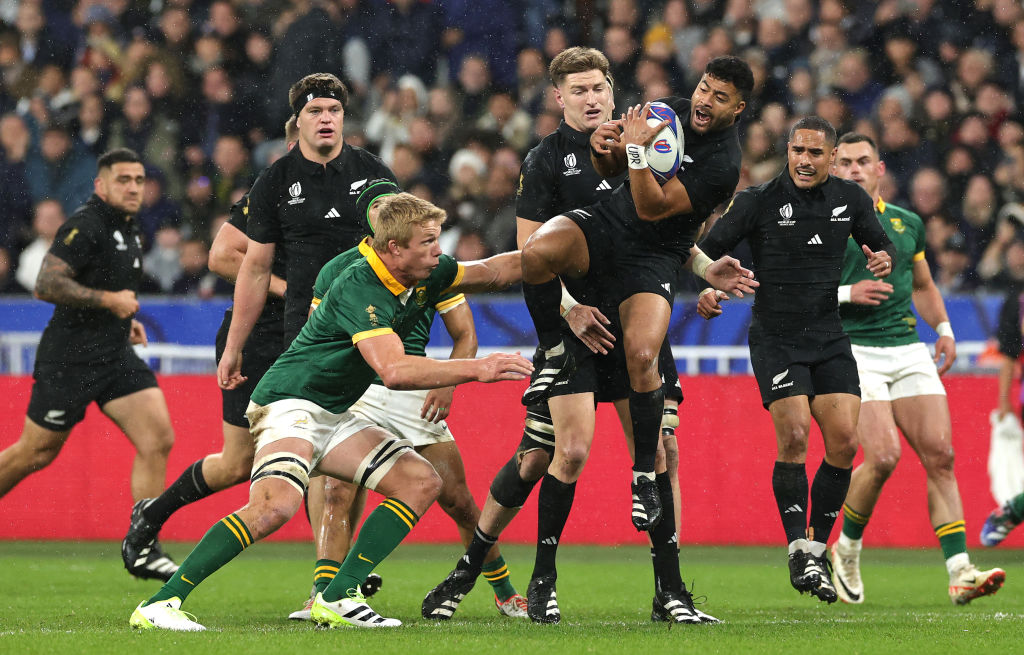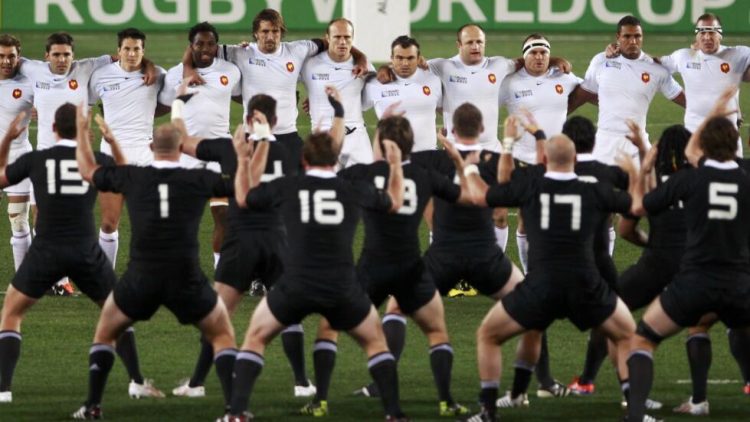Introduction
The Rugby World Cup is the pinnacle of international rugby, bringing together the world’s best teams to battle for the most coveted trophy in the sport. One of the most anticipated matchups in recent tournaments has been between two of rugby’s greatest nations: New Zealand and South Africa. With New Zealand known for its free-flowing, attack-oriented style and South Africa boasting one of the most formidable defensive systems in world rugby, the contest between these two teams is always a thrilling spectacle.
In the latest World Cup clash, many fans and experts were surprised when New Zealand’s usually dynamic attacking game was stifled by South Africa’s relentless defense. Despite New Zealand’s formidable offensive lineup, they struggled to break through South Africa’s defensive wall, ultimately leading to their defeat. In this article, we will analyze why New Zealand’s offensive strategy failed to breach South Africa’s defense, examining the tactical factors, defensive organization, and key moments that determined the outcome of this high-stakes encounter.
I. The Strength of South Africa’s Defense: A Tactical Masterclass
South Africa has long been renowned for its physicality and defensive discipline, making it one of the most difficult teams to break down in international rugby. Their defense is not just about raw power; it is a well-coordinated, strategic effort that stifles opponents’ attacking momentum at every turn. Against New Zealand, this defensive prowess was on full display.
A. The “Blitz” Defense: A Key to South Africa’s Success
One of the most notable features of South Africa’s defensive strategy is the use of the “blitz” defense, a high-pressure system that aims to rush the attacking team into making mistakes. This strategy involves defenders pushing up quickly from the line of defense, closing down space and forcing the attacking team to play under pressure. The objective is to disrupt the attacking team’s rhythm and prevent them from executing their game plan.
- Pressure on the First Receiver: The blitz defense places enormous pressure on the first receiver of the attacking team, making it difficult for them to execute clean passes or launch effective attacking moves. Against New Zealand, the All Blacks’ playmakers like Beauden Barrett and Aaron Smith were frequently harassed by South Africa’s defensive line, preventing them from organizing smooth attacking phases.
- Aggressive Line Speed: South Africa’s ability to close down space with aggressive line speed meant that New Zealand’s backs, who thrive on fast-paced, wide-open play, were constantly under pressure, limiting their ability to break through the defense.
B. Tackling and Rucking: The Cornerstones of South African Defense
In addition to their strategic defensive setup, South Africa’s tackling technique and rucking efficiency are key elements of their defensive game. The South African team has consistently demonstrated high levels of physicality in the tackle, ensuring that they disrupt the ball and slow down any attacking momentum.
- Low, Dominant Tackles: South African players are known for their ability to execute low, dominant tackles that force the ball carrier to the ground quickly. This negates New Zealand’s ability to generate quick ruck ball, slowing down their attacking play.
- Efficient Rucking: South Africa’s forwards are adept at clearing out opposition players at the breakdown, ensuring that they maintain control of the ball and prevent New Zealand from disrupting their ruck.
C. Defensive Communication and Cohesion
Another important aspect of South Africa’s defense is their excellent communication and defensive cohesion. The Springboks are masters at maintaining a solid defensive line, where players work together to cover gaps and prevent line breaks. This organization makes it difficult for any attacking team to find space or exploit weaknesses.
- Player Awareness: Each player is fully aware of their defensive responsibilities and how they fit into the team’s overall defensive structure. This awareness means that when one player tackles, others are already in position to cover the space, making it nearly impossible for New Zealand to find gaps in the defense.
II. New Zealand’s Attack: A High-Risk, High-Reward Strategy
New Zealand has long been known for their fast, expansive style of rugby, which is built around creating space and quick ball movement. Their attacking strategy relies on the skill and flair of their backs, combined with the powerful carrying of their forwards. However, against South Africa, New Zealand’s attack struggled to find its usual rhythm, despite being one of the most potent attacking forces in world rugby.
A. Struggling to Break the Defensive Line
One of the key reasons New Zealand’s attack faltered was their inability to break through South Africa’s defensive line. The All Blacks are used to making line breaks with their quick ball movement and brilliant offloads, but South Africa’s aggressive blitz defense stifled this style of play.
- Limited Line Breaks: New Zealand’s backs, including Rieko Ioane and Sevu Reece, were unable to break through South Africa’s defensive line as they usually would against other teams. This lack of line breaks meant that New Zealand couldn’t get the ball to their attacking players in space, leaving them without their preferred attacking options.
- No Space to Work With: The South African defense ensured that New Zealand’s runners had little space to work with, and their attempts to attack wide were quickly shut down by the Springboks’ defensive line speed.
B. Kicking Game: A Double-Edged Sword
In response to South Africa’s high-pressure defense, New Zealand often turned to their kicking game as a means of gaining territory and breaking down the defensive wall. However, this strategy proved to be a double-edged sword.
- Box Kicks and Garryowens: New Zealand’s box kicks, particularly from Aaron Smith, were often aimed at gaining territory and challenging South Africa’s back three. However, the South African backfield, led by players like Willie le Roux and Cheslin Kolbe, handled the high balls with composure, negating much of the attacking potential of the kicks.
- Counter-Attacks: South Africa’s counter-attacking game was extremely dangerous, with their backline able to turn New Zealand’s kicks into attacking opportunities. This created a high-risk, high-reward scenario for New Zealand, as their attempts to break South Africa’s defense through the air left them vulnerable to swift counter-attacks.
III. Key Moments: Turning Points in the Match
In addition to tactical battles, key moments in the game also had a significant impact on the outcome. A few crucial plays stand out that helped to determine the result of this World Cup clash.
A. Key Turnovers and Breakdown Work
One of the most pivotal moments in the game came when South Africa won a crucial turnover at a key breakdown. This turnover prevented New Zealand from generating momentum and allowed South Africa to launch a counter-attack that resulted in points.
- Ruck Efficiency: South Africa’s dominance at the breakdown, where they disrupted New Zealand’s ball on multiple occasions, ensured they stayed on top in terms of possession and territory. This disrupted New Zealand’s flow and prevented them from building phases of attack.
B. The Impact of Set Pieces
Scrums and lineouts are integral to a rugby team’s attacking game, and New Zealand struggled to gain a significant advantage in this area. South Africa’s forwards dominated the set-piece exchanges, giving the Springboks the platform to launch their own attacking moves while limiting New Zealand’s attacking opportunities.
- Scrum Dominance: South Africa’s scrum, led by their powerful front row, consistently won penalties and disrupted New Zealand’s set-piece, stifling their ability to gain a stable attacking platform.
- Lineout Pressure: South Africa’s lineout defense was also impressive, with key steals disrupting New Zealand’s plans to launch attacks from set-piece situations.

IV. New Zealand’s Tactical Adjustments: Were They Too Late?
As the match progressed and New Zealand’s attack struggled to break through South Africa’s defense, many wondered whether the All Blacks made the necessary tactical adjustments in time.
A. Lack of Adaptation in the Early Stages
In the early stages of the match, New Zealand’s coaches may have failed to adjust their strategy in response to South Africa’s blitz defense. Although they continued to try to play their usual expansive game, they were not quick enough to counter the high-pressure defense of South Africa.
- Missed Opportunities: At several points, New Zealand had opportunities to switch to a more direct approach or attempt to control the breakdown more effectively. However, they persisted with their wide game, which played into South Africa’s strengths.
B. Adjustments in the Second Half
In the second half, New Zealand did make some tactical changes, such as kicking for territory more frequently and attempting to control the breakdown. However, by this point, South Africa’s defense had already established dominance, and New Zealand struggled to make inroads.
- Late Response: Despite these adjustments, they came too late in the match to have a significant impact. South Africa’s defense remained solid, and the game was already beyond New Zealand’s reach.
V. Conclusion
New Zealand’s offensive strategy failed to break through South Africa’s defense in this Rugby World Cup encounter for several reasons. South Africa’s defensive system, built around the blitz defense, physicality at the breakdown, and effective counter-attacking, proved too much for the All Blacks to handle. Despite New Zealand’s attacking prowess, they were unable to generate the space and momentum needed to break down the South African defense.
Key moments, such as turnovers and dominance at the breakdown, as well as a lack of early tactical adjustments, contributed to New Zealand’s inability to convert their attacking opportunities into points. While South Africa’s defense was undoubtedly the star of the match, New Zealand’s failure to adapt and break through was a crucial factor in their defeat.
This clash between two rugby powerhouses was a testament to the importance of defensive strategy and tactical adaptability at the highest level of the sport. South Africa’s win shows that in rugby, defense can often be the key to victory, even against the most potent attacking teams in the world.


































Discussion about this post